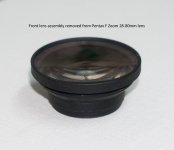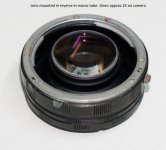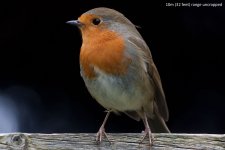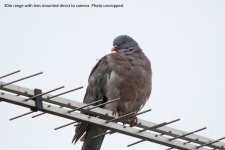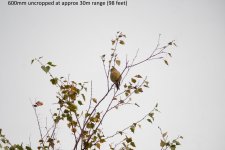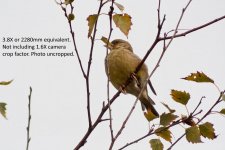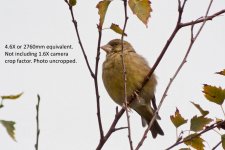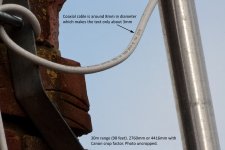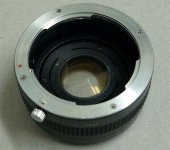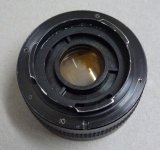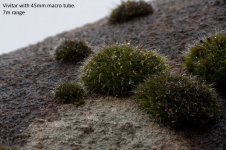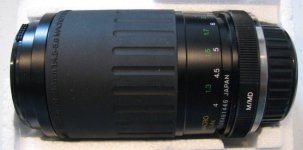Paul Corfield
Well-known member
I've got some old lenses laying around and thought I'd try this after seeing something on the internet. This is basically the front lens assembly from an old Pentax zoom lens. Not sure how many bits of glass are in it but it seems pretty well corrected for CA. It's giving around 2X equivalent when mounted right next to the camera and magnification increases quickly if you mount it further away.
It was getting dark when I tried this out so I need to see if CA will become apparent in brighter conditions. Seems nice and sharp though, certainly comparable to my very sharp Antares barlow. To give an idea how dark it was this is only 1/5 sec so please forgive any soft feathers in the image.
All info is on the photos. The fence is a little soft in the bottom left corner of the Robin photo and I'm pretty certain this is because I was at a slight angle to the fence. I photographed a brick wall with the scope square on to the wall and the photo was sharp to the corners.
Paul.
It was getting dark when I tried this out so I need to see if CA will become apparent in brighter conditions. Seems nice and sharp though, certainly comparable to my very sharp Antares barlow. To give an idea how dark it was this is only 1/5 sec so please forgive any soft feathers in the image.
All info is on the photos. The fence is a little soft in the bottom left corner of the Robin photo and I'm pretty certain this is because I was at a slight angle to the fence. I photographed a brick wall with the scope square on to the wall and the photo was sharp to the corners.
Paul.




